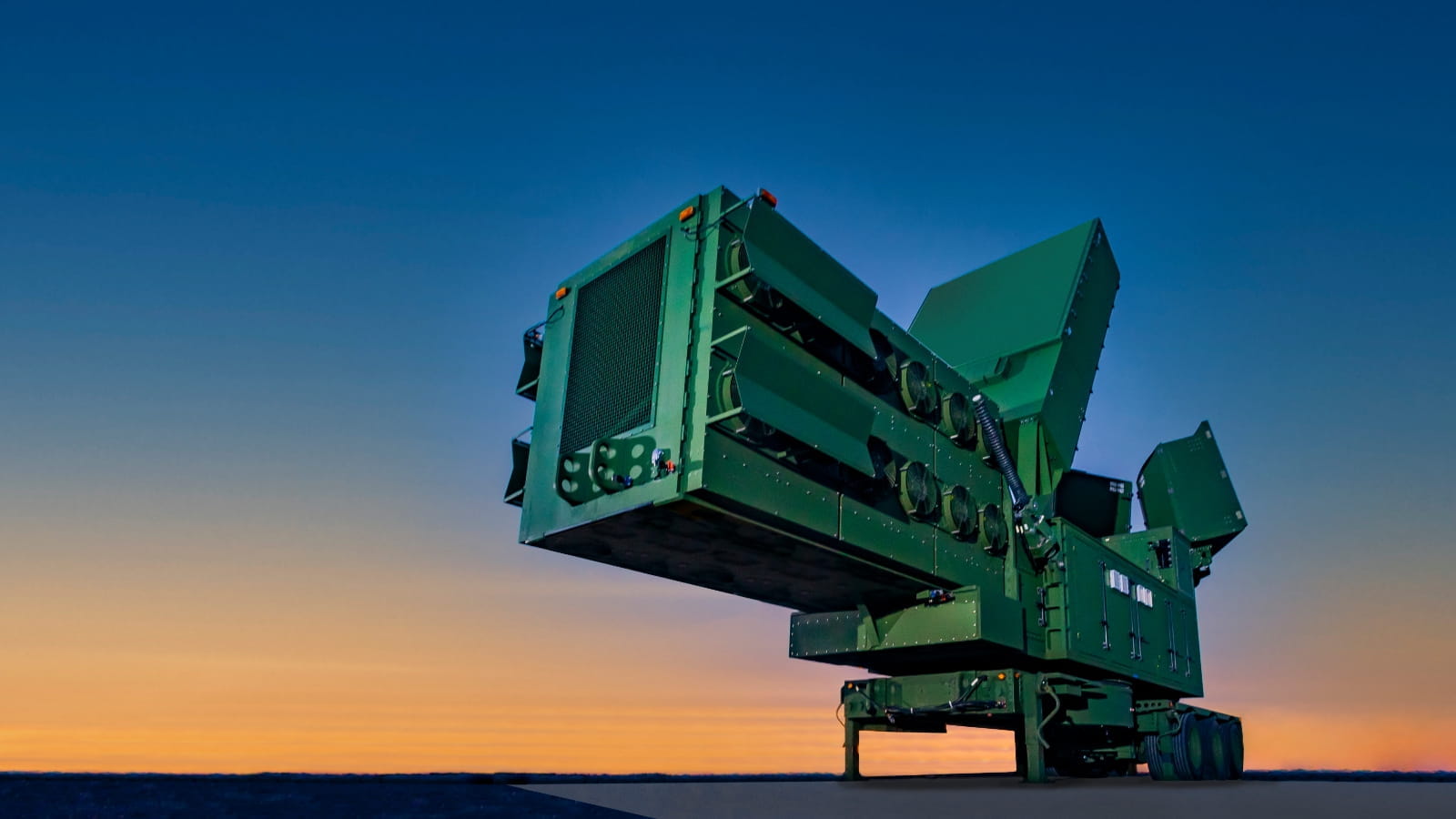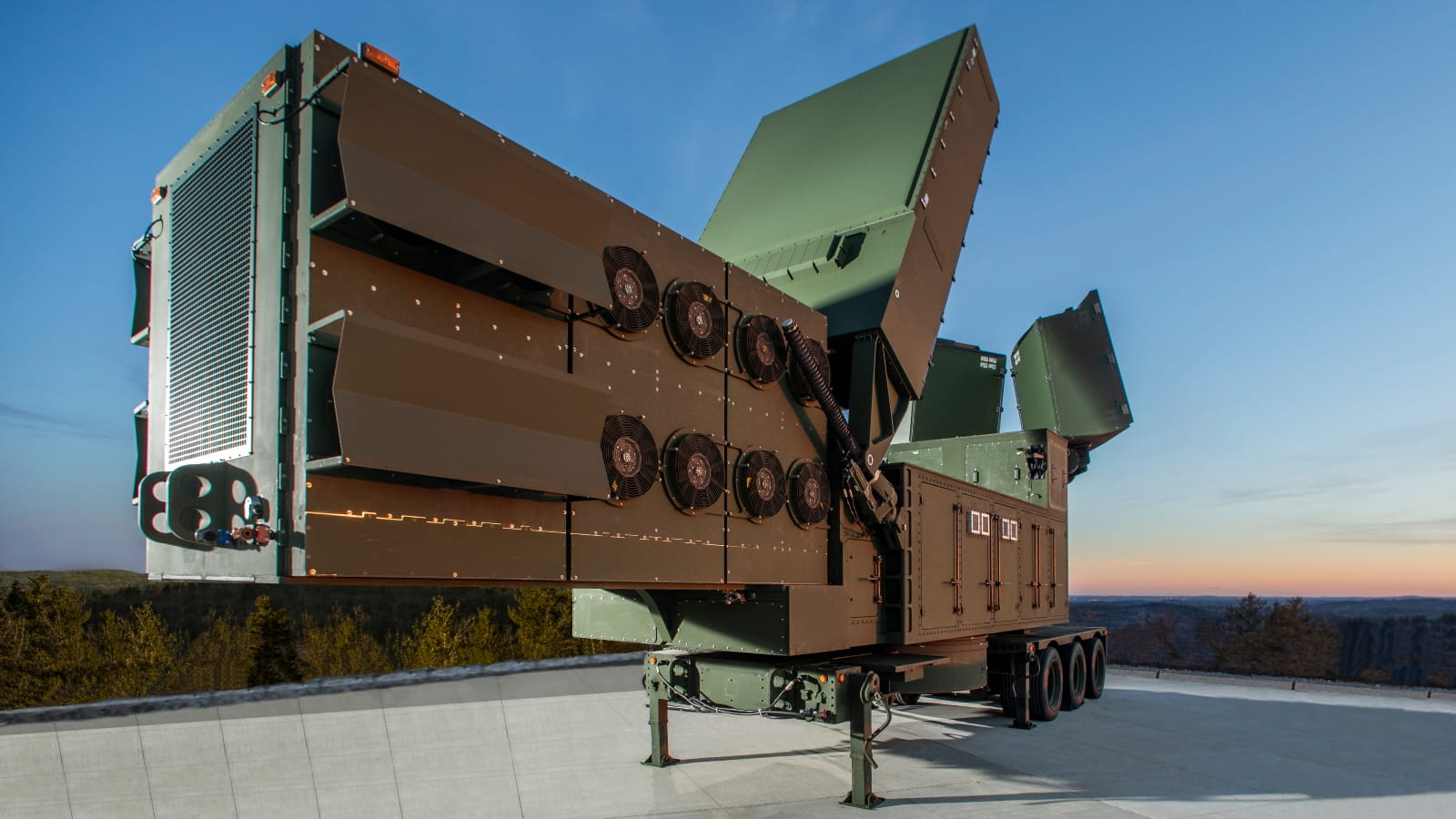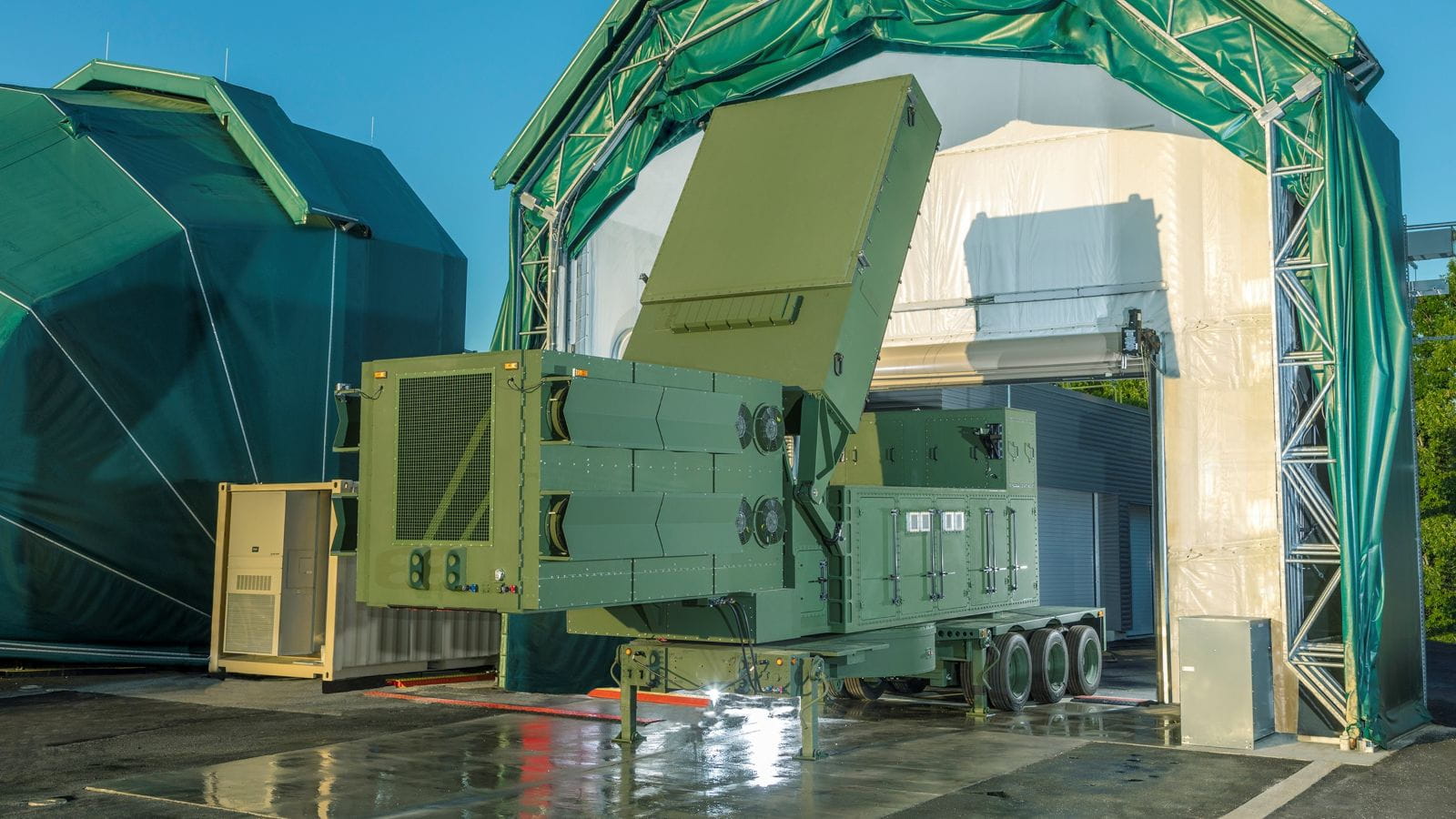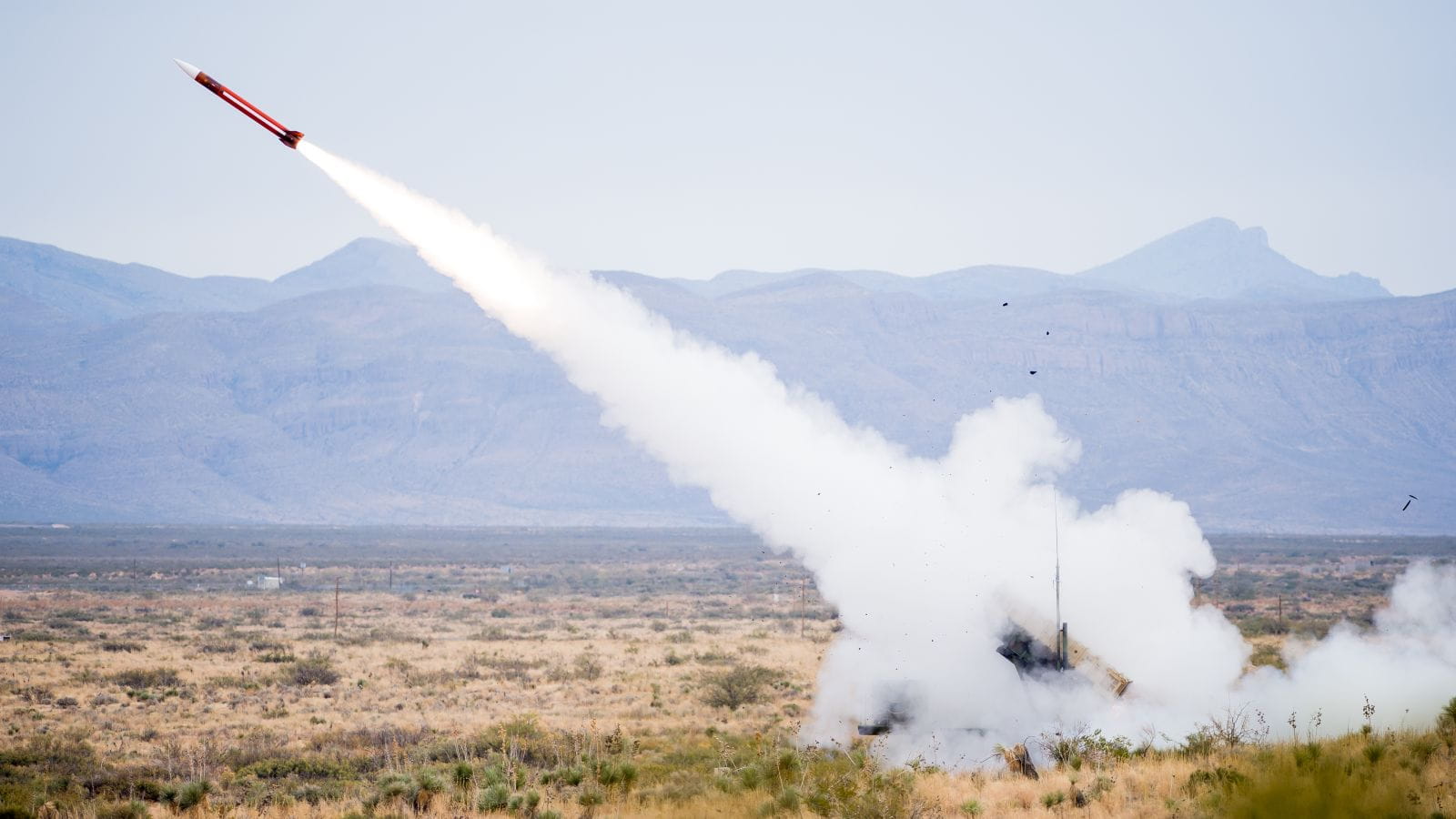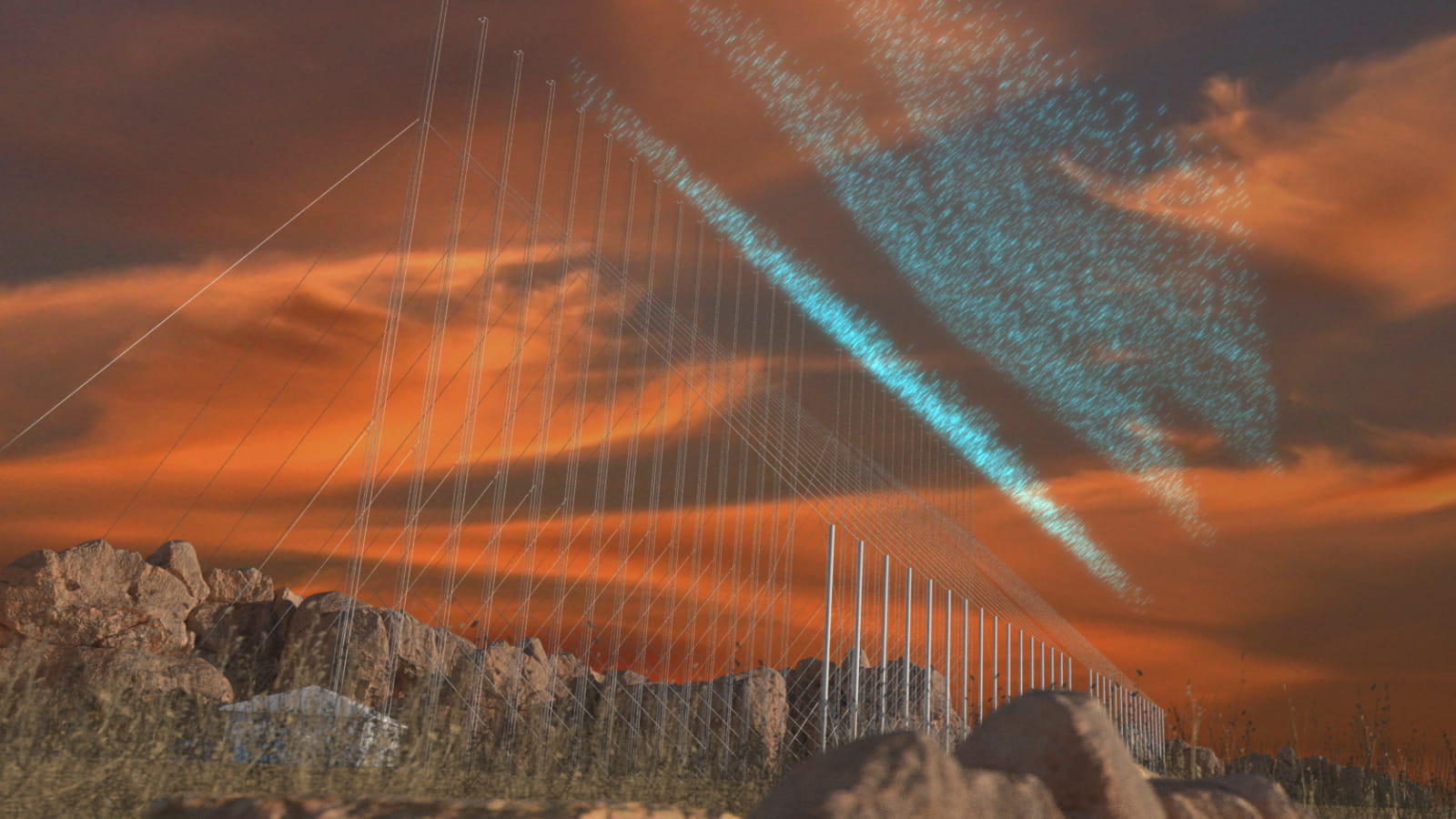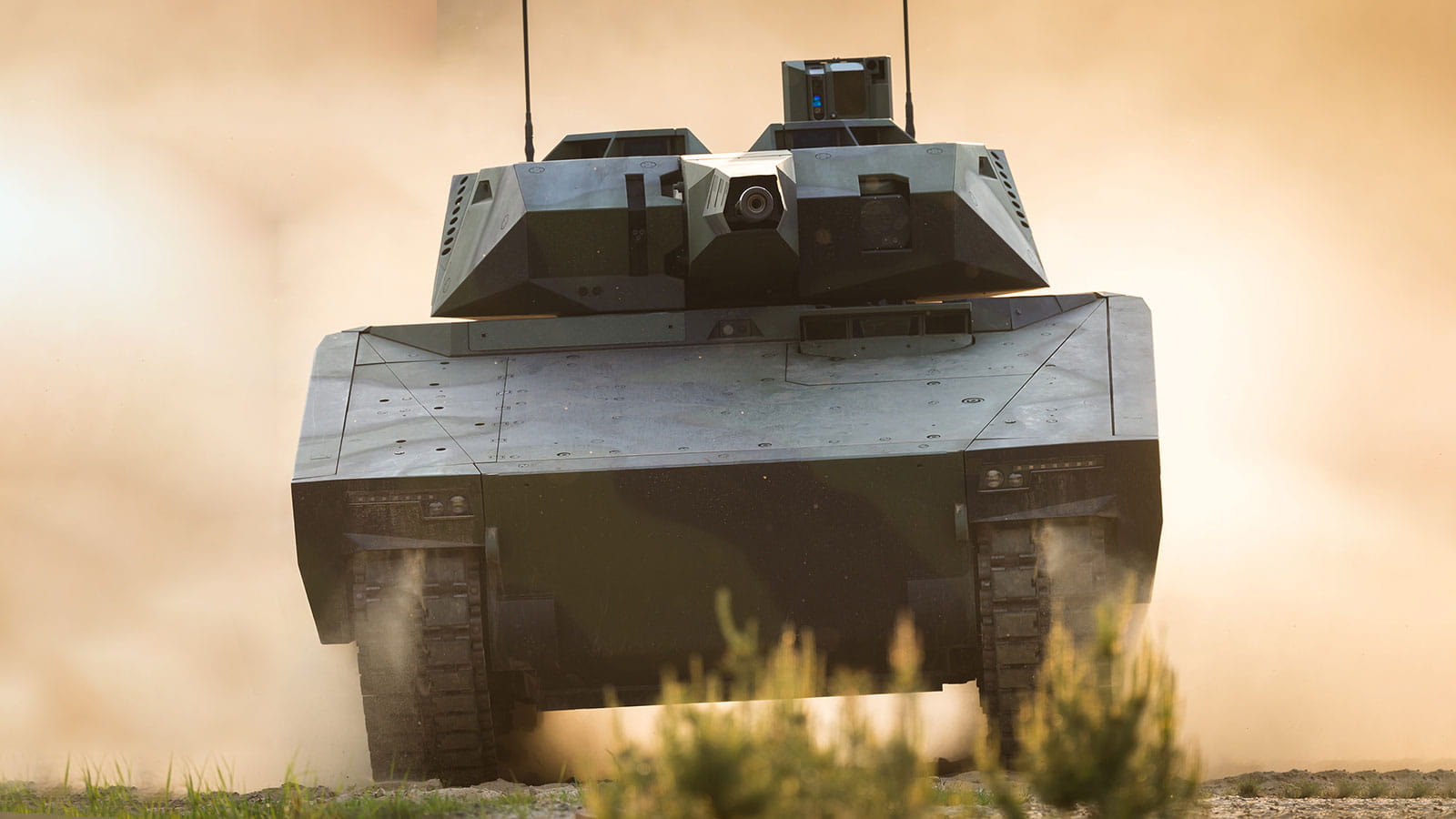LTAMDS radar shines in first tests
U.S. Army's new radar proves its mettle against drones, cruise missiles and ballistic missiles; Global expansion begins
It’s 5 a.m. on “mission day” for Charlie Holland, the chief engineer of the U.S. Army’s new air defense radar.
After driving over rugged terrain, dodging free-range cattle and antelope, Holland arrives at a remote site in southern New Mexico to put the Lower Tier Air and Missile Defense Sensor, or LTAMDS, to the test and prove its capabilities against a myriad of threats.
“We’ve quite literally been in the trenches for months - prepping, testing and rehearsing for this moment, this mission,” said Holland, LTAMDS technical lead at Raytheon, an RTX business. “Now it’s time to watch this radar shine ... show the world what it can do.”
Holland is part of an engineering team that successfully led contractor verification testing on the LTAMDS radar at the U.S. Army White Sands Missile Range. The series of successful tests marked a critical milestone in development of LTAMDS, a next-generation, 360-degree radar built to defeat threats including unmanned aircraft, cruise missiles and tactical ballistic missiles – even hypersonic weapons, which fly faster than a mile a second. The Army plans to use it as a replacement for its Patriot air defense systems, while international customers look to add the new radar to their existing Patriot architecture.
“For 40-plus years, Patriot has had the watch, and there’s no denying its effectiveness. It's a stalwart of air defense – reliable, effective and combat proven,” said Bill Patterson, LTAMDS program director at Raytheon. “If it’s possible to take that air defense radar to the next level, it’s LTAMDS.”
Raytheon has built six LTAMDS radars since the contract award in 2019. They are advancing through developmental testing, which will continue in 2024.
“It will search, it will acquire, it will track, it will discriminate, and it will guide a missile to an intercept. And we will demonstrate all that capability in U.S. government developmental tests,” Patterson said.
Environmental and mobility qualification, as well as expanded system-of-system testing will follow developmental testing in 2024, with full operational capability expected by year-end.
Seeing the big picture
LTAMDS has three antenna arrays – the primary in front, two secondaries in the back. Working together, they can detect and engage multiple threats from any direction simultaneously.
Raytheon uses active electronically scanned array, or AESA, technology and military-grade gallium nitride, or GaN, made at its foundry in Andover, Massachusetts, to strengthen LTAMDS’ radar signal and enhance its sensitivity for longer range, higher resolution and more capacity.
“LTAMDS is a transformational capability. It’s ready for today’s fights, but it has the range, power and software flexibility to deal with evolving threats and to support the future fight as well,” said Bob Kelley, a senior director for Requirements and Capabilities at Raytheon.
Going global
The radar, and specifically its ability to track threats in 360 degrees, is of keen interest to U.S. friends and allies, Kelley said. “The ability to detect and defend against complex, highly coordinated multi-threat attack scenarios is critical in layered defense.”
In 2023, the Polish Minister of Defense approved a Letter of Acceptance with the U.S. Army to enhance its air and missile defense capabilities with 12 LTAMDS radars. When the foreign military sale is finalized, Poland, a NATO ally, will be the first international partner to purchase the radar, which will complement their existing Patriot system.
Patriot is the backbone of air defense for 19 countries, many of which have expressed interest in LTAMDS because “they see it as an important evolution in their air and missile defense capability,” Kelley said.
“We’ve identified a set of design changes for Patriot that would allow it to accept LTAMDS and integrate it as part of a Patriot configuration,” Kelley said.
Testing rigorously
To accelerate fielding of LTAMDS, Raytheon is rotating the six radars through simultaneous integration and testing at company and U.S. government sites – an atypical approach for development programs. Tests emulate a real-world environment, fraught with threats moving fast, at varying elevations and distances, and all at the same time.
“The velocity, maneuverability and lethality of aerial threats being used around the world has exponentially increased,” Kelley said. “And today’s environments are contested, meaning adversaries are actively trying to disrupt military operations, particularly in the electromagnetic spectrum, which includes communications, radar and electronic warfare.”
Contractor verification tests increased the complexity of the threats incrementally, cranking up the pressure on LTAMDS’ advanced features and capabilities.
While connected to the Army’s command and control system, also known as the Integrated Air and Missile Defense Battle Command System, or IBCS, the radar completed 11 missions, including a simulated PAC-3 missile engagement against a tactical ballistic missile.
Completing a mission
With hundreds of scenario tests and rehearsals behind Holland and his team – consisting of a software engineer, system analyst and an operator – it was time for the real thing. On the day of the cruise missile test, they sat alongside a government test lead in a 60-foot trailer equipped with computing equipment.
They began the day with a “walk-up,” a term for powering on and calibrating the radar, and ensuring all antennas were “talking,” or operating properly.
The test started with a couple of practice runs, walking through each step to confirm the equipment and crew were ready. After a brief break, they resumed the test and then gave control to the IBCS, which was in the control trailer next to them.
Hovering beyond the range, an aircraft awaited the signal to launch its cruise missile “surrogate,” a stand-in that mimics operational speeds and behaviors of a real cruise missile.
Holland monitored the health of the radar in real time. And the test conductor located in the control trailer gave the aircraft an “all clear” message, cueing it to launch. So it did.
The team stared intently at two monitors. One showed tracking information, the other video of the radar.
The radar searched for the target and acquired it.
The team watched as the radar maintained the track. The test was a success.
Over the course of the two-week contractor verification test period, they conducted similar exercises against drones, aircraft and ballistic missile surrogates. Each test was a resounding success.
The mission was complete.
